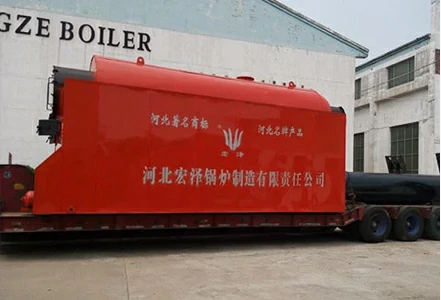
Dec . 23, 2024 15:57 Back to list
steam heat service
Understanding Steam Heat Service A Comprehensive Overview
In many urban environments, steam heat service remains a critical component of the infrastructure that supports residential, commercial, and industrial heating needs. This system, often overlooked in the age of modern heating solutions such as electric and gas systems, provides an efficient, reliable, and cost-effective way of distributing thermal energy.
What is Steam Heat Service?
Steam heat service refers to the system that generates steam, typically from water heated in a boiler, which is then distributed through a network of pipes to provide heating. The main advantage of using steam as a heating medium lies in its high efficiency and the ability to transport energy over long distances. Steam systems can be found in older buildings, especially in cities with a rich industrial history, but they also serve modern facilities that prioritize efficiency and reliability.
How It Works
The steam heat service process begins with a boiler that heats water to a boiling point, creating steam. This steam is then channeled through insulated pipes that reduce heat loss during transit. The steam travels to various buildings or heating units, where it is released, transferring its heat to the surrounding environment. As the steam cools, it condenses back into water and returns to the boiler system to be reheated, thus completing the cycle. This closed-loop system minimizes waste and conserves energy, highlighting its ecological advantages.
Types of Steam Systems
There are primarily two types of steam heating systems high-pressure and low-pressure systems. High-pressure systems are typically used in industrial settings, where heat output needs are significant. In contrast, low-pressure systems are more common in residential and commercial buildings, delivering sufficient heat without the complexities and hazards associated with high-pressure systems.
Benefits of Steam Heat Service
steam heat service

1. Efficiency Steam heat systems can provide substantial amounts of heat with relatively low energy input. Their ability to transfer heat over long distances without significant loss is a key efficiency factor. 2. Reliability These systems have proven to be highly reliable. Once established, steam heat services often require less maintenance than other heating systems. They can continue operations in extreme cold weather conditions, ensuring warmth in the harshest environments.
3. Cost-Effectiveness While the initial installation of a steam heating system can be costly, the long-term savings on energy bills and maintenance make it a viable option for many businesses and homeowners. Additionally, centralized steam heating systems can benefit multiple buildings, reducing the overall cost per unit of heating delivered.
4. Space Efficiency Because steam can transport heat efficiently through pipes, smaller physical footprints are often needed for mechanical equipment, freeing up space in buildings that could be used for other purposes.
5. Environmental Benefits The efficiency of steam heat service translates to lower carbon emissions when properly managed. Additionally, many steam systems can utilize renewable energy sources or waste heat, further reducing their environmental impact.
Challenges and Considerations
Despite its many benefits, steam heat service does come with challenges. Aging infrastructure can lead to leaks and inefficiencies, which necessitates rugged maintenance and possible upgrades. Moreover, operators must be trained to handle the complexities of steam systems, as they can pose safety risks if not properly managed.
Moreover, regulatory changes and technology advancements can influence the viability and operational costs of steam heating. The industry must remain adaptable to new energy sources and methods for increasing efficiency while complying with environmental standards.
Conclusion
Steam heat service is a time-tested method of providing thermal energy that is as relevant today as it was during the industrial revolution. Understanding its operation, advantages, and challenges allows building owners and facility managers to make informed decisions regarding their heating needs. As cities evolve and continue to explore methods for reducing energy consumption and lowering emissions, steam heating might find a renewed purpose as a cornerstone of urban heating solutions. Whether in historical buildings or modern facilities, the enduring nature of steam heat service emphasizes its importance in a sustainable future.
-
High-Efficiency Commercial Oil Fired Steam Boiler for Industry
NewsJul.30,2025
-
High-Efficiency Biomass Fired Thermal Oil Boiler Solutions
NewsJul.30,2025
-
High Efficiency Gas Fired Thermal Oil Boiler for Industrial Heating
NewsJul.29,2025
-
High-Efficiency Gas Fired Hot Water Boiler for Sale – Reliable & Affordable
NewsJul.29,2025
-
High Efficiency Biomass Fired Hot Water Boiler for Industrial and Commercial Use
NewsJul.29,2025
-
High-Efficiency Biomass Fired Hot Water Boiler for Industrial Use
NewsJul.28,2025
Related PRODUCTS






















